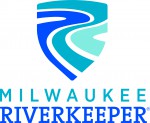Milwaukee Riverkeeper annual report on river health shows improvements in water quality.
MILWAUKEE – Each year, Milwaukee Riverkeeper releases an Annual River Basin Report Card, detailing the health of the Milwaukee River Basin’s three major waterways. In spite of a bumpy start to the season with the outbreak of COVID-19, Milwaukee Riverkeeper’s monitoring volunteers rose to the challenge, finding comfort in our waters and contributing to community science at a time when community was hard to come by. With a four percent increase in grade from last year, the Milwaukee River Basin moved from a D+ to a C- for overall river health.
“Stay-at-home orders halted spring monitoring statewide, which meant less data overall was collected and analyzed. But a bigger impact on the grades is likely weather–2020 was significantly drier than the previous two years, which both broke rainfall records in southeast Wisconsin. Less rain means less runoff into area rivers, and water quality improved in every part of the Milwaukee River Basin except for the North Branch of the Milwaukee River. ” said Riverkeeper, Cheryl Nenn.
“This is a very special collaboration between people, non-profits, businesses, and agencies, coming together to work on understanding what is happening in our waterways. Our rivers connect to Lake Michigan and form the lifeblood of our community. These beautiful and critical waterways run throughout the greater Milwaukee area and provide drinking water to millions of people, recreational opportunities improving our quality of life, and economic benefits.” said Executive Director, Jennifer Bolger Breceda.
While the overall impacts of collaboration on river health may be hard to quantify on an annual basis, Bolger Breceda believes they are very real.
“There is a lot of great work happening in our watershed and collaboration plays a key role in the success of these projects. We highlight some in this edition of our Report Card, including Milwaukee’s Area of Concern, which is a significant undertaking and a generational opportunity for our community to remove legacy contamination at the bottom of the river and restore our watersheds in a major way. A community-wide collaboration of stakeholders is making this a priority.” says Bolger Breceda.
As for how people can get involved? Nenn says the best way to start is with a simple act. Even small choices have the power to create meaningful change. You can join in the effort to improve your local river by participating in local cleanups and restoration activities, and minimizing your use of fertilizers, salt, and other chemicals at home and work. Read the full report and find other ways to get involved at www.milwaukeeriverkeeper.org.
TOP TAKEAWAYS FOR 2020:
The Milwaukee River Basin scored a C- (70.68%) in overall river health in 2020. The increase in grade is the result of less rainfall from the previous two record-breaking wet years. Less rainfall means less stormwater runoff, which carries pollutants into our waterways. We see this through improvements in turbidity across the Basin.
Overall, the Basin continues to struggle in 3 areas: phosphorus, bacteria and conductivity.
- Phosphorus is largely from fertilizers, sewage and manure, industrial sources, and from corrosion inhibitors added to drinking water to minimize leaching from lead pipes.
- Bacteria comes from many sources, including sewage, manure, wildlife, dogs, and other natural sources.
- Conductivity measures charged particles, and this is likely impacted by nutrients in “charged” forms (nitrates, phosphates, etc.) that are in sewage, manure, and fertilizer; as well as by road salt and other deicing products in winter months.
NOTE: This press release was submitted to Urban Milwaukee and was not written by an Urban Milwaukee writer. While it is believed to be reliable, Urban Milwaukee does not guarantee its accuracy or completeness.
Mentioned in This Press Release
Recent Press Releases by Milwaukee Riverkeeper
Let Our Rivers Unite Us!
Apr 11th, 2024 by Milwaukee RiverkeeperMilwaukee Riverkeeper Spring Cleanup Event Slated for April 20, 2024
Milwaukee Riverkeeper Annual Report Shows Improvement in River Health
Jan 19th, 2024 by Milwaukee RiverkeeperAnnual report celebrates progress and highlights efforts to restore and reconnect rivers to improve water quality in Milwaukee River Basin























